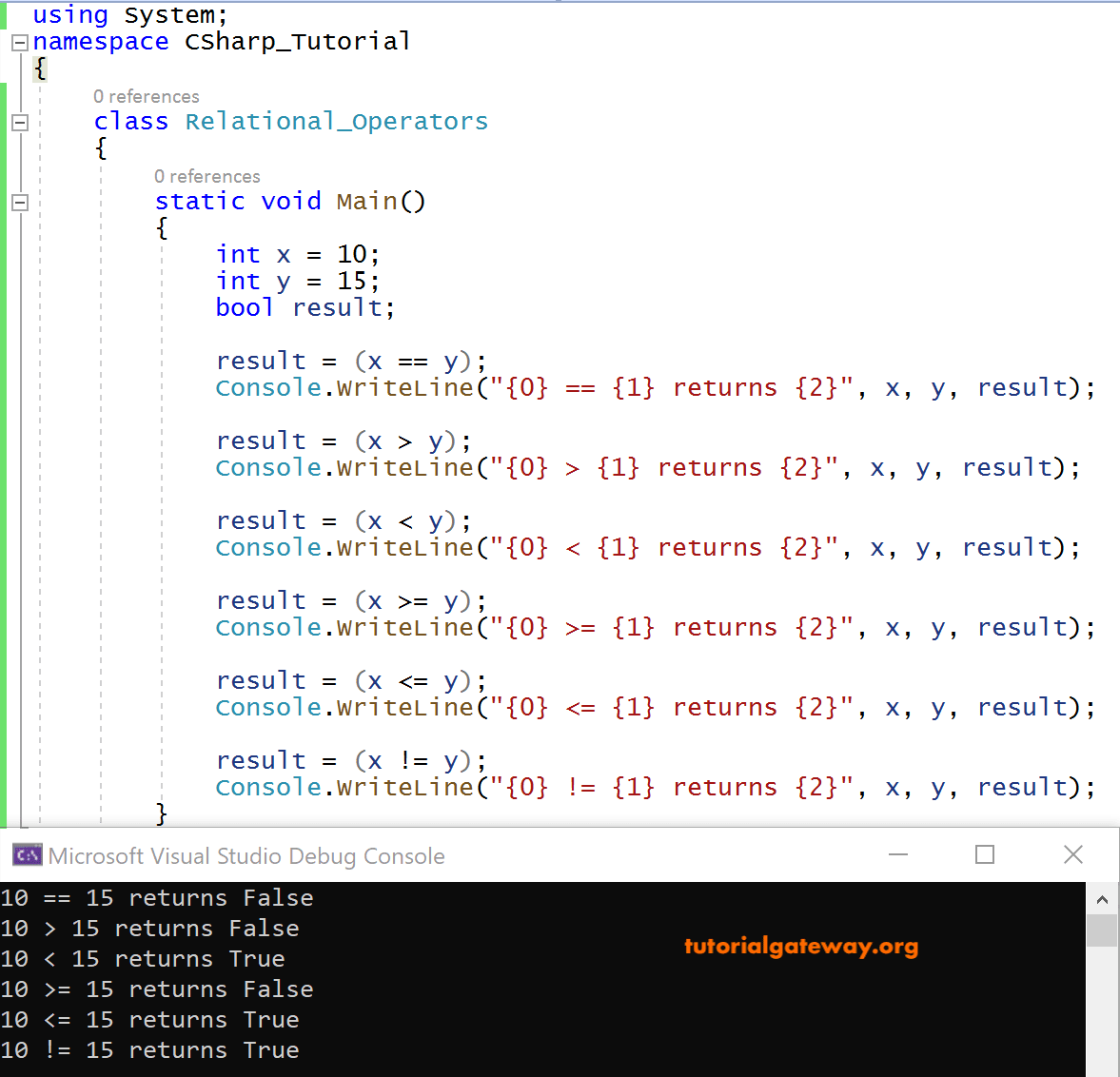The C# Relational operators work on two operands and return the boolean value true (1) if the relation between two operands is satisfied. Otherwise, it returns false (0). The following Relational operators table shows different relational operators.
| Symbols | Operation | Example |
|---|---|---|
| = = | Equal To | 3 = = 2 returns false |
| > | Greater than | 3 > 2 returns true |
| < | Less than | 3 < 2 returns false |
| > = | Greater than or equal to | 3 > = 2 returns true |
| < = | Less than or equal to | 3 < = 2 returns false |
| != | Not Equal To | 3 ! = 2 returns true |
Relational Operators Example
In the following C# code, we have taken two integer variables x and y. After applying different relational operators to them, the result is stored in a Boolean variable result.
using System;
class Relational_Operators
{
static void Main()
{
int x = 10;
int y = 15;
bool result;
result= (x==y);
Console.WriteLine("{0} == {1} returns {2}", x, y, result);
result= (x>y);
Console.WriteLine("{0} > {1} returns {2}", x, y, result);
result= (x<y);
Console.WriteLine("{0} < {1} returns {2}", x, y, result);
result= (x>=y);
Console.WriteLine("{0} >= {1} returns {2}", x, y, result);
result= (x<=y)
Console.WriteLine("{0} <= {1} returns {2}", x, y, result);
result= (x != y);
Console.WriteLine("{0} != {1} returns {2}", x, y, result);
}
}
In the above C# example, integer variables x=10, y=15 are the two operands. And on applying relational operators on them, of the expression is satisfied, True is stored in the result otherwise False.
